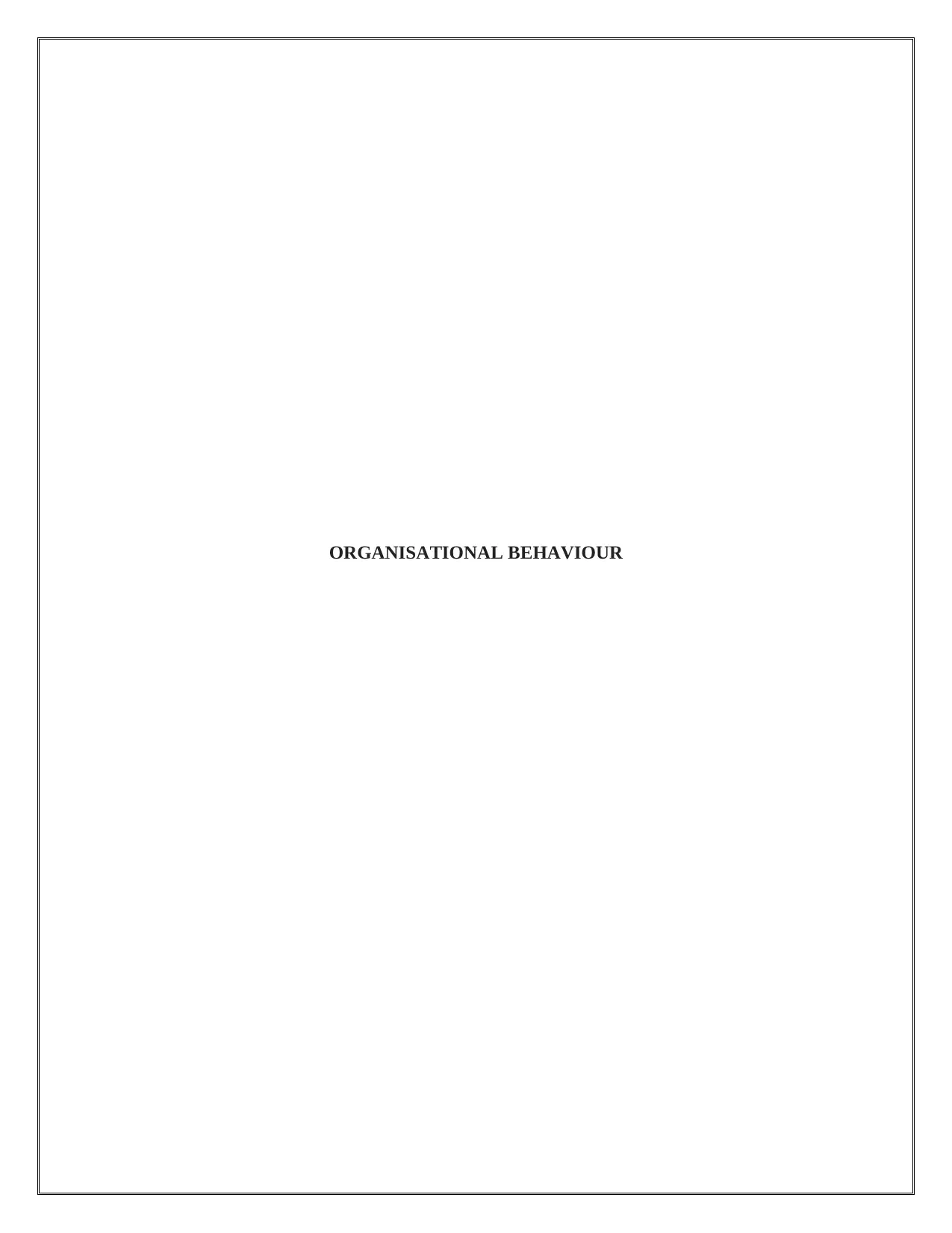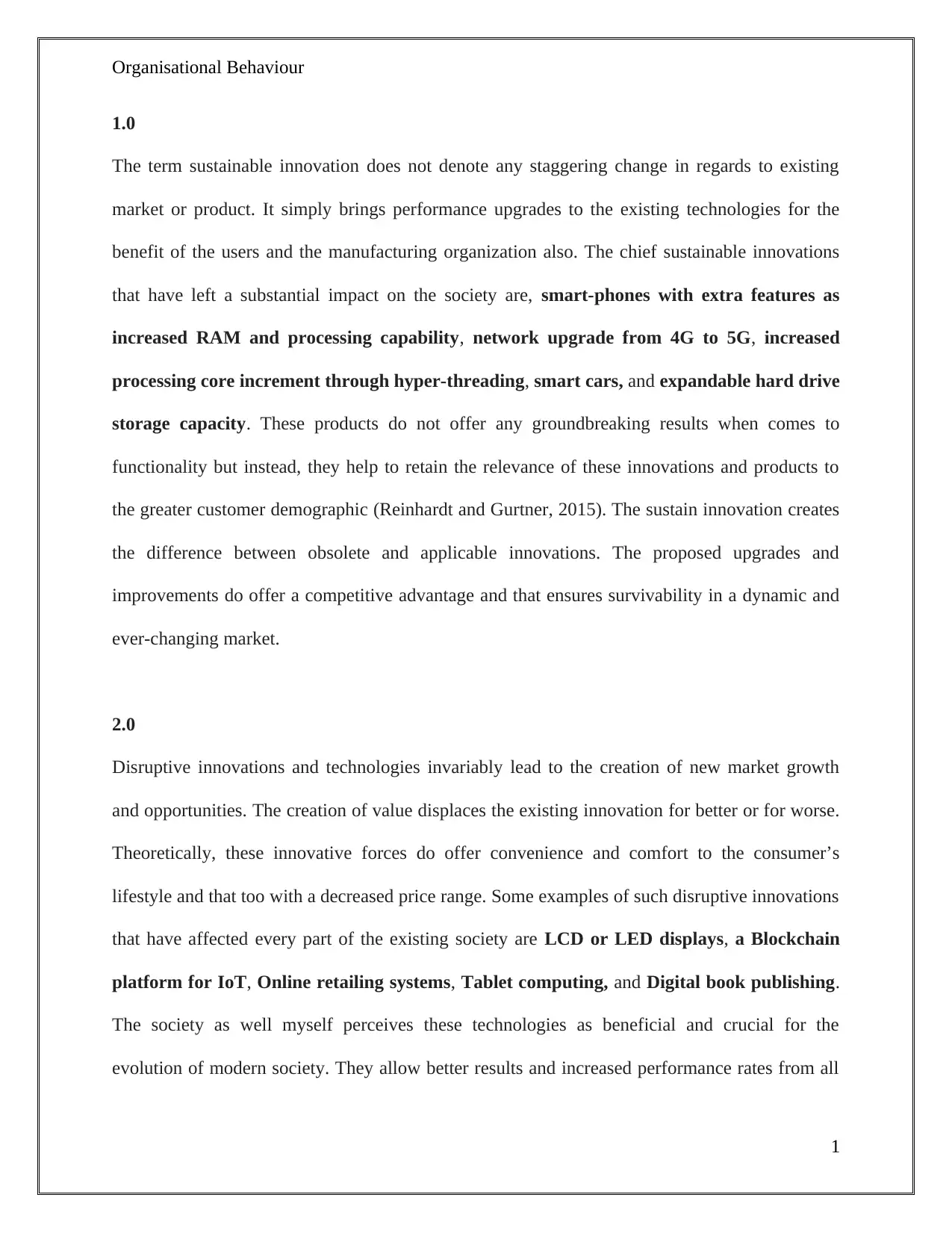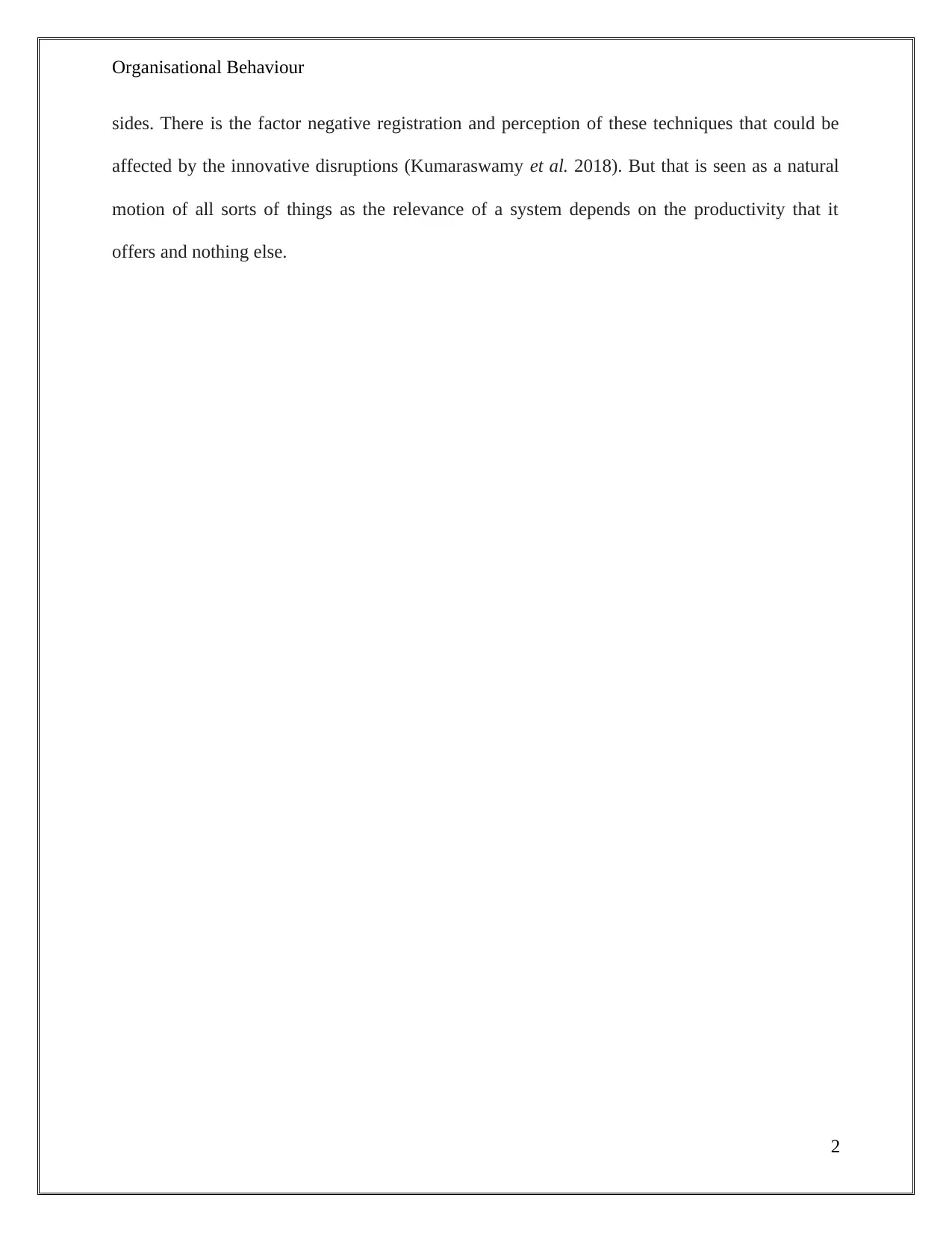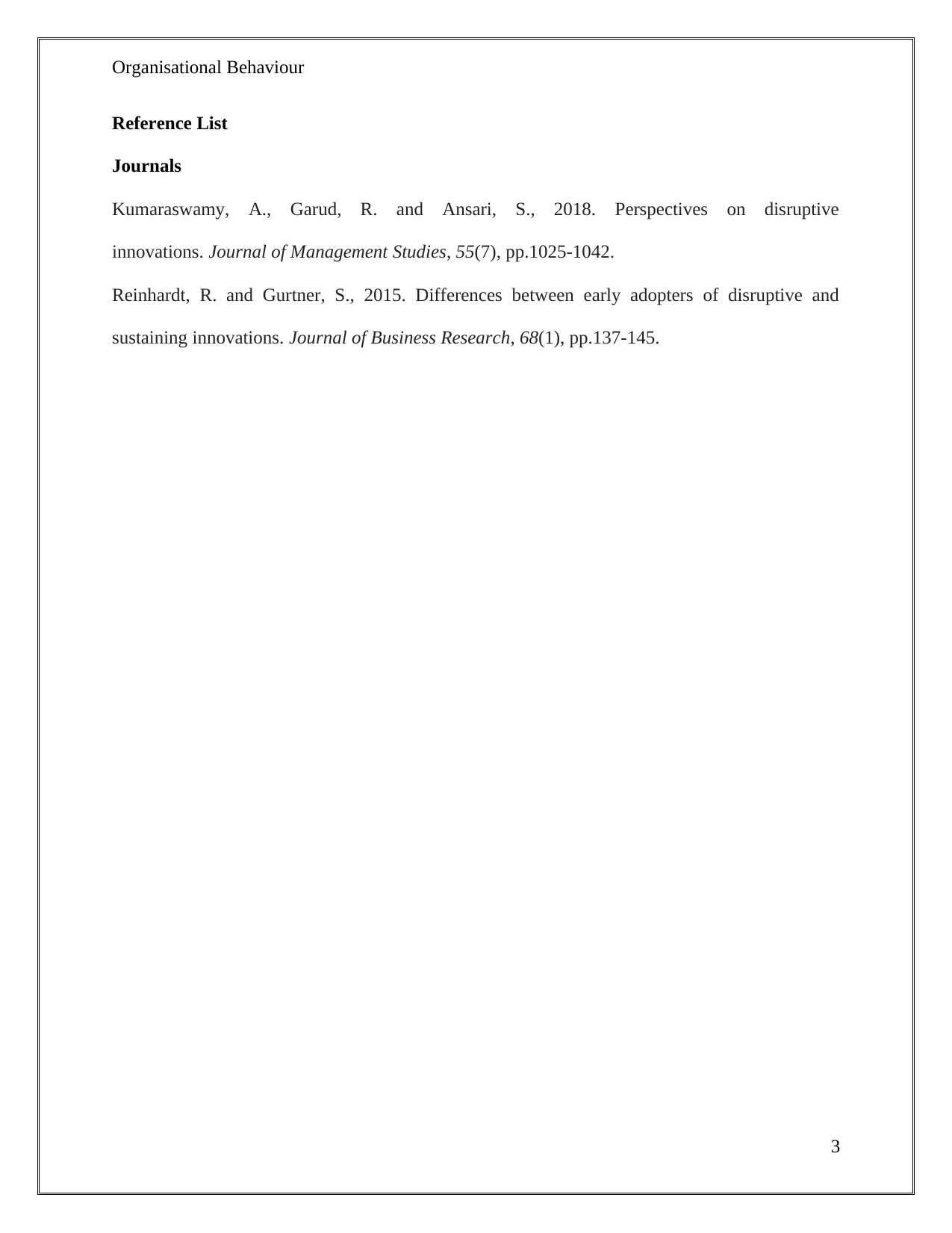Organisational Behaviour Report: Innovation and Impact
VerifiedAdded on 2022/10/09
|4
|416
|48
Report
AI Summary
This report delves into the realm of organisational behaviour, specifically focusing on the impact of sustainable and disruptive innovations. It explores the key differences between these two types of innovation, highlighting how sustainable innovations, like advancements in smartphones and storage, maintain the relevance of existing technologies by offering incremental improvements. In contrast, the report examines disruptive innovations such as LCD displays, Blockchain, online retailing, and tablet computing, which create new markets and displace existing technologies. The report emphasizes the benefits of these innovations for consumers, including increased convenience and lower costs, while acknowledging the potential for negative perceptions. The report also includes a list of references, providing academic sources that support the analysis of these innovations.
1 out of 4










![[object Object]](/_next/static/media/star-bottom.7253800d.svg)